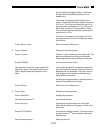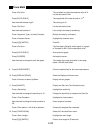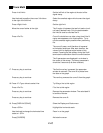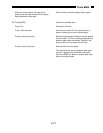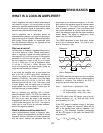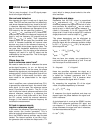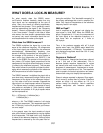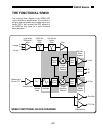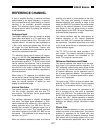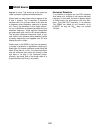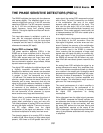
3-3
SR850 Basics
So what exactly does the SR850 meas-
ure?Fourier's theorem basically states that any
input signal can be represented as the sum of
many, many sine waves of differing amplitudes,
frequencies and phases. This is generally consid-
ered as representing the signal in the "frequency
domain". Normal oscilloscopes display the signal
in the "time domain". Except in the case of clean
sine waves, the time domain representation does
not convey very much information about the vari-
ous frequencies which make up the signal.
What does the SR850 measure?
The SR850 multiplies the signal by a pure sine
wave at the reference frequency. All components
of the input signal are multiplied by the reference
simultaneously. Mathematically speaking, sine
waves of differing frequencies are orthogonal, i.e.
the average of the product of two sine waves is
zero unless the frequencies are EXACTLY the
same. In the SR850, the product of this multiplica-
tion yields a DC output signal proportional to the
component of the signal whose frequency is exact-
ly locked to the reference frequency. The low pass
filter which follows the multiplier provides the aver-
aging which removes the products of the reference
with components at all other frequencies.
The SR850, because it multiplies the signal with a
pure sine wave, measures the single Fourier (sine)
component of the signal at the reference frequen-
cy. Let's take a look at an example. Suppose the
input signal is a simple square wave at frequency
f. The square wave is actually composed of many
sine waves at multiples of f with carefully related
amplitudes and phases. A 2V pk-pk square wave
can be expressed as
S(t) = 1.273sin(ωt) + 0.4244sin(3ωt) +
0.2546sin(5ωt) + ...
where ω = 2πf. The SR850, locked to f will single
out the first component. The measured signal will
be 1.273sin(ωt), not the 2V pk-pk that you'd meas-
ure on a scope.
In the general case, the input consists of signal
plus noise. Noise is represented as varying signals
at all frequencies. The ideal lock-in only responds
to noise at the reference frequency. Noise at other
frequencies is removed by the low pass filter fol-
WHAT DOES A LOCK-IN MEASURE?
lowing the multiplier. This "bandwidth narrowing" is
the primary advantage that a lock-in amplifier pro-
vides. Only inputs at frequencies at the reference
frequency result in an output.
RMS or Peak?
Lock-in amplifiers as a general rule display the
input signal in Volts RMS. When the SR850 dis-
plays a magnitude of 1V (rms), the component of
the input signal at the reference frequency is a
sine wave with an amplitude of 1 Vrms or
2.8 V pk-pk.
Thus, in the previous example with a2 V pk-pk
square wave input, the SR850 would detect the
first sine component, 1.273sin(ωt). The measured
and displayed magnitude would be 0.90 V (rms)
(1/√2 x 1.273).
Degrees or Radians?
In this discussion, frequencies have been referred
to as f (Hz) and ω (2πf radians/sec). This is
because people measure frequencies in cycles
per second and math works best in radians. For
purposes of measurement, frequencies as meas-
ured in a lock-in amplifier are in Hz. The equations
used to explain the actual calculations are some-
times written using ω to simplify the expressions.
Phase is always reported in degrees. Once again,
this is more by custom than by choice. Equations
written as sin(ωt + θ) are written as if θ is in
radians mostly for simplicity. Lock-in amplifiers
always manipulate and measure phase in
degrees.



